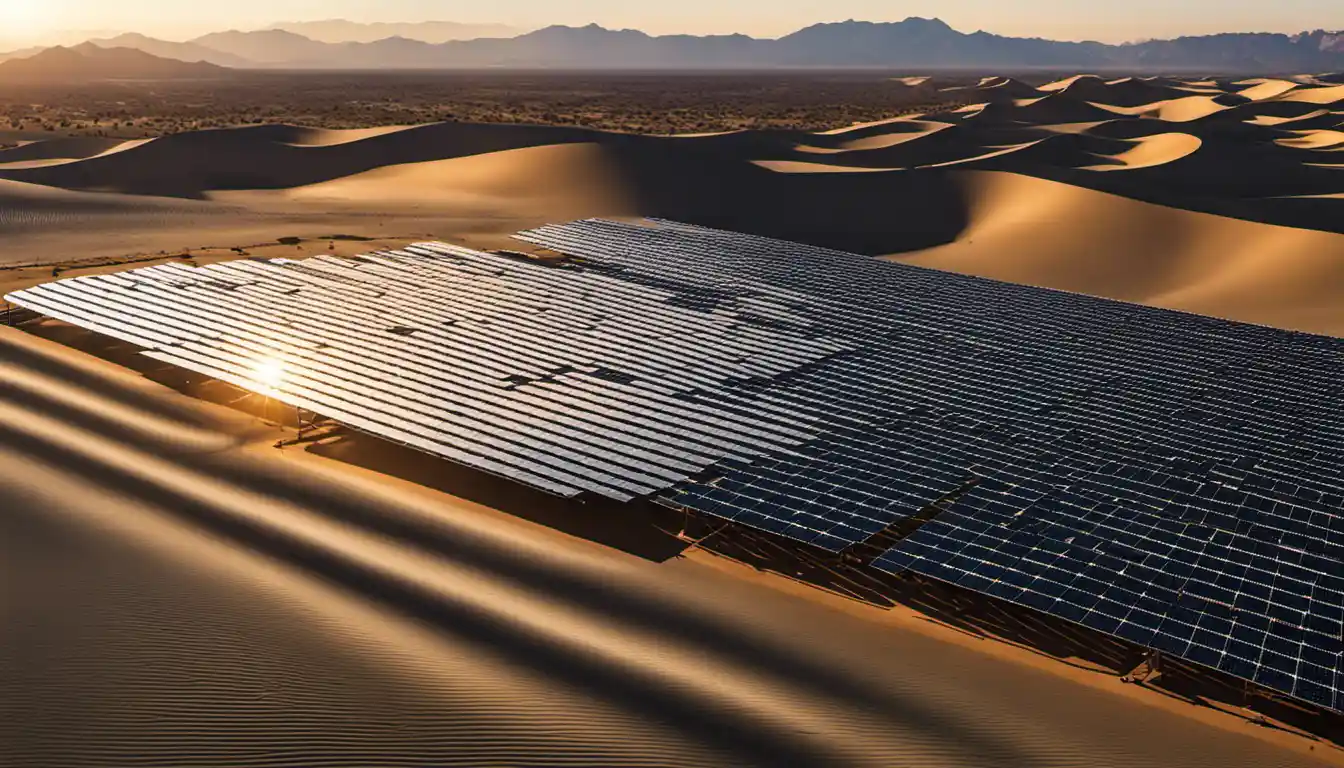Introduction
The best solar tracking systems often depend on particular needs and environments, but two highly rated ones are the AllEarth Solar Trackers and the NEXTracker. These systems accurately follow the sun’s path to maximize energy production, incorporate advanced technology, and have a robust design for durability.
Understanding Solar Tracking Systems
Growing up, you may remember planting sunflowers in the garden and watching how these yellow-headed beauties would move throughout the day, facing towards the sun. It’s fascinating, isn’t it? In the world of solar energy, we have an equivalent of those sun-chasing flowers, conveniently called solar tracking systems. More about these appealing marvels can be found on our tech page /what-is-a-solar-tracker.
Importance of Solar Tracking Systems
The neat thing about a solar tracking system is that it allows solar panels to harness the maximum amount of the sun’s energy by orienting and adjusting the panels toward the sun’s position throughout the day. They play a pivotal role in optimizing the efficiency of solar energy systems by ensuring your panels capture every ounce of sunlight possible, leading to a significant increase in your energy production.
Types of Solar Tracking Systems
Single-Axis Solar Tracking Systems
Picture this: a sunflower that only moves from east to west. A single-axis solar tracker behaves pretty much the same way. This type of tracker moves the panels in relation to the sun’s path from sunrise to sunset. They’re less complicated and more affordable than their dual-axis counterparts but can’t capture as much sunlight.
Dual-Axis Solar Tracking Systems
![]()
Now let’s imagine our sunflower has decided to upgrade its movements, not just following the sun from east to west but also adjusting its angle concerning the height of the sun. That’s what a dual-axis solar tracking system does! Albeit more expensive, these trackers are able to capture maximum sunlight, improving the system’s energy yield by up to 45%.
Factors to Consider when Choosing a Solar Tracking System
Efficiency and Accuracy
This one’s a no-brainer. If you’re investing in a solar tracking system, it must be efficient and accurate. Look for systems that hold stellar records in precisely tracking the sun’s path and effectively improving energy production.
Durability and Reliability
I always say, choose a solar tracking system that’s as sturdy as a veteran seafarer – able to endure heavy storms and harsh environments. Not all products are built to last, so center your search around brands with a reputation for durability and reliability.
Cost and Budget
Your budget will largely dictate the system you end up with, but do remember – cheaper isn’t always better. While single-axis systems cost less initially, dual-axis systems generate more energy, thereby providing a better return on investment over time.
Maintenance Requirements
Like any mechanical system, solar trackers require maintenance. To avoid headaches down the line, ensure that your chosen tracker has a minimalist design with fewer moving parts and an excellent post-installation support record.
Best Solar Tracking Systems For 2022
![]()
In my 20 years in the solar energy industry, I’ve come across numerous solar trackers, but the following are my top picks for 2022:
AllEarth Solar Trackers: Ideal for residential use, these dual-axis trackers are designed to increase energy output by up to 45%. They are durable and have GPS and wireless technology for accurate tracking.
NEXTracker: NEXTracker’s single-axis solar trackers significantly enhance the economics of solar projects by increasing energy yield and reducing costs. They are uniquely designed to allow each solar row to operate independently and are known for their advanced analytics platform and high reliability.
Key Solar Tracking System Companies
If you’re wondering where to find the aforementioned trackers and other sturdy, efficient, and technologically refined solar trackers, check out these leading solar tracking system companies:
NEXTracker
With an impressive track record in delivering solar trackers worldwide, NEXTracker has carved a niche for itself. They offer single-axis trackers noted for their individual row system, advanced technologies, and increased energy yields.
Array Technologies

Pioneers in the industry, Array Technologies offer single and dual axis trackers renowned for their longevity, value, and performance. Their trackers are simplistic in design, lowering maintenance needs.
SunPower
SunPower doesn’t just provide solar panels, but also single axis solar tracking systems. Their solutions provide up to 30% more energy and are ideal for commercial and utility-scale projects.
Sun Action Trackers
Specializing in dual-axis trackers, Sun Action Trackers are worth considering if you want an optimal energy yield and minimal land use. Their trackers integrate the Real-Time Sensing (RTS) system, which self-adjusts the panels according to weather conditions.
Benefits of Using Solar Tracking Systems
Solar trackers are your ticket to enhanced energy production. Think of them as energy-bolstering sidekicks that have the potential to increase your solar system’s output by up to 45%. Plus, they pave the way for lower energy costs and less reliance on grid power.
Limitations and Challenges of Solar Tracking Systems
As with every superhero, there always exist some limitations – even with the best solar tracking systems. The reality is they have higher initial costs, demand more complex installation, and do require maintenance. But remember, greater returns often call for higher investment.
Conclusion
Choosing the best solar tracking system is an exercise in understanding your specific needs, budget, and energy goals. With the right system in place, you’ll harvest more energy, reduce power costs, and tip your hat to a greener future. As a “solar” veteran, I can assure you, the sun shines brighter when you track it!



1 thought on “Best Solar Tracking Systems: Comprehensive Guide and Top Picks for 2022”
Comments are closed.